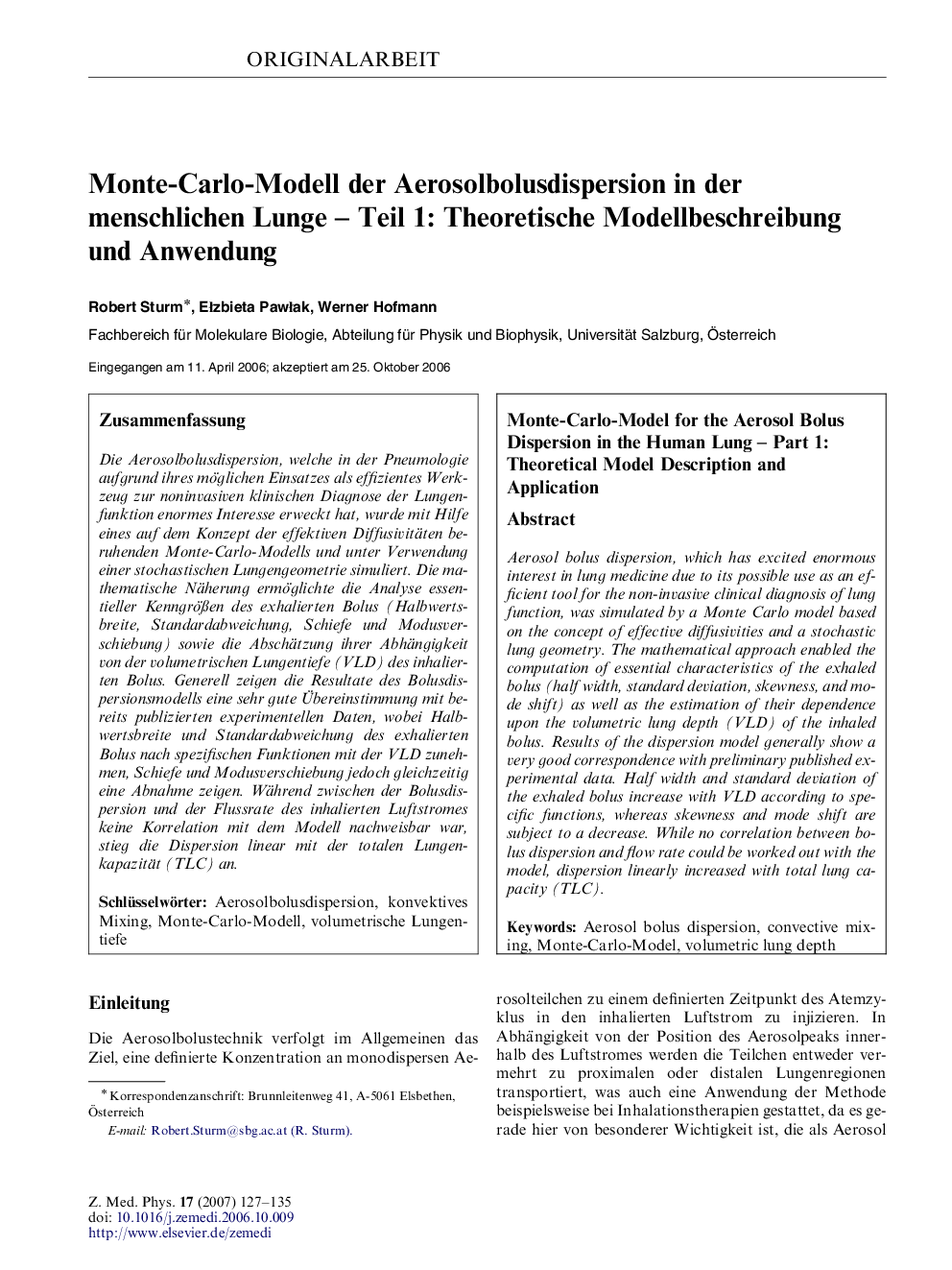| Article ID | Journal | Published Year | Pages | File Type |
|---|---|---|---|---|
| 1887805 | Zeitschrift für Medizinische Physik | 2007 | 9 Pages |
Abstract
Aerosol bolus dispersion, which has excited enormous interest in lung medicine due to its possible use as an efficient tool for the non-invasive clinical diagnosis of lung function, was simulated by a Monte Carlo model based on the concept of effective diffusivities and a stochastic lung geometry. The mathematical approach enabled the computation of essential characteristics of the exhaled bolus (half width, standard deviation, skewness, and mode shift) as well as the estimation of their dependence upon the volumetric lung depth (VLD) of the inhaled bolus. Results of the dispersion model generally show a very good correspondence with preliminary published experimental data. Half width and standard deviation of the exhaled bolus increase with VLD according to specific functions, whereas skewness and mode shift are subject to a decrease. While no correlation between bolus dispersion and flow rate could be worked out with the model, dispersion linearly increased with total lung capacity (TLC).
Related Topics
Physical Sciences and Engineering
Engineering
Biomedical Engineering
Authors
Robert Sturm, EÅzbieta PawÅak, Werner Hofmann,
